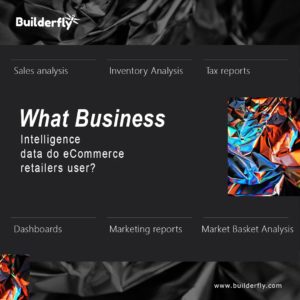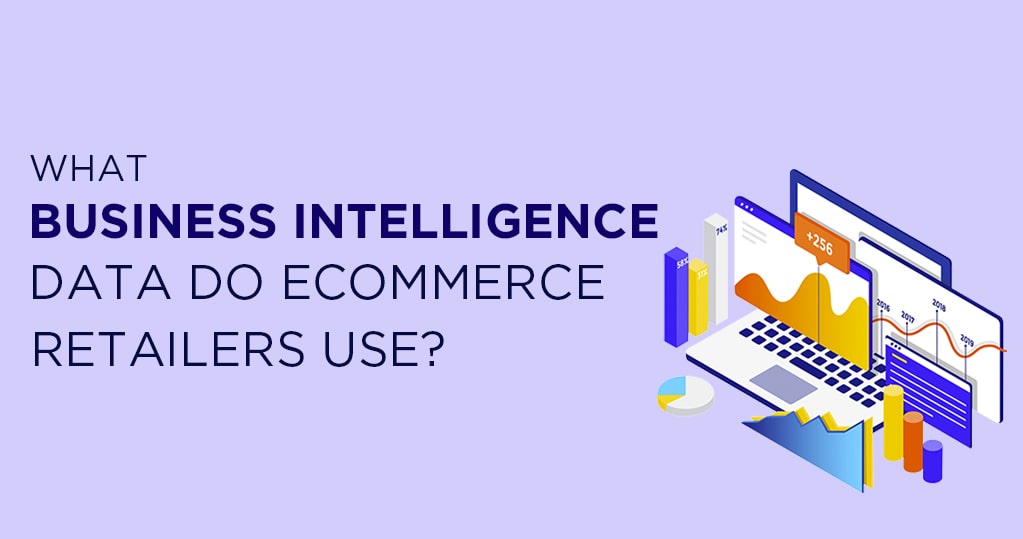Ecommerce retail is showing exponential growth over the years. It’s not a wonder that ecommerce is overpowering the offline retail business. However, it can never be entirely possible that brick and mortar stores will get doomed because the personal touch is missing in the case of online business. That’s one of the important reasons where web stores lag behind the traditional stores.
Unlike the brick and mortar store, ecommerce generates a lot of database of the regular business reports. Business Intelligence (BI) can make it possible for you to offer the same personal touch that customers are missing while shopping online by understanding and serving their needs in a manner they want.
Don’t you know what Business Intelligence is?
Let me tell you!
Business Intelligence (BI) is the brain added into the software with the purpose of gathering, analyzing, and interpreting the data gathered from all the online sales channels. This analyzed data is then arranged in the proper formats and shown in human-understandable graphics and business reports to give insights about the end goals of your business. Such data provides foresight about the attainment of business goals and helps the production and sales & marketing team to decide on the campaigns and improvise as per trends. Such reports help you actively understand what’s working for your business and what’s not.
Before telling the further usage of the database that BI does, it’s essential to know where you can gather data from.
BI Tools to gather data
When your business is expanding in all the directions, your database is also widely distributed. Here are the different tools from where you can collect data and analyze it further.
- Google Analytics: When you are selling your products via your website or the mobile app, you can connect your intellectual property over Google analytics to make the most out of your business. Google Analytics is a robust BI tool. By enabling the eCommerce tracking module, you not only gain a better idea of your demographics, acquisition cycle, sales but also improvises the growth rate by creating the conversion funnel. When you create the conversion funnel considering your end goals, it turns more effortless for you to track the conversion rate as well as to check the reasons for which customers are leaving the products in the cart. In case there is some technical glitch, you don’t have to wait for hours, rather you can fix it in the meantime and offer fantastic customer experience.
- Google Webmasters:

Google webmaster tools, as the name suggest helping you manage your website like experts. The search console offers you access to a lot of data that can improve the visibility of your site in the search engines. You can configure and link your Google analytics, and Google webmasters account to compare and relate the data. Google webmaster assists you in fixing all the technical glitches, fixing broken links, site speed, robot.txt file, sitemap, and much more that can improvise the performance of your website or mobile app. You get access to plenty of data from here, from time to time, to optimize your store in a fashion of improvizing its ranking. - Live chat reports:

With the notion of making your store interactive, businesses are installing chatbots and live chat software to connect with each of their customers personally. They are an asset for your business, as they help you download all those reports with the database of the potential leads when you were offline. The intelligent chat software is designed in a fashion that you could download the reports, chat history, demographics of interaction, and so much that you can leverage further to optimize your store. - Performance & reports: If you are selling across the eCommerce platform like Amazon, Flipkart, eBay, and so on, you can track your performance as a seller under the performance tab. You can download the sales score as a business and performance as per the mentioned matrics over tenure. Mostly the performance of a quarter or 60-days is calculated in a single go. To gather detailed information about your business, sales, tax, and much more, you can navigate to the reports section. From this section, you can download your reports for a specific time, as well as monthly. Mostly, reports downloaded from here will be in the form of excel sheets, which are provided with detailed descriptive sheets.
All the sources, as mentioned earlier, help you drill down all the information that is important for your business and can improvise it further. Business Intelligence empowers business managers with all such tools to gather data and get insights about your performance of your business.
What Business Intelligence data do eCommerce retailers user?

Other than the tools mentioned above, there are numerous other sources to gather eCommerce data like accounting software, social media platforms, Google AdSense, etc. So, the next worry is, you must know what you have to do with this massive database.
Tell me if you can see without the light?
We know you can’t! Like the lights, Business Intelligence helps you see your rate of success and what else you must try to take your business to the horizon.
- Don’t forget dashboards:
Irrespective of the tool you are trying your hands on, don’t forget to check the dashboard section. The dashboard gives you an outline of several matrics that you can access in detail by clicking further. The overall view of your store and different factors makes it easier for you to understand which of them you need to look for. Based on your preference for time, you can check for the factors and get insights into something you like to research.
- Sales analysis:
By downloading the sales report for month or quarter wise, you can download and check for the sales reports of your store. To start with, you will check the category-wise sales; further, you drill down to parent SKUs and child SKUs to see your overall sales. You can use the sales reports to measure global sales, commission paid (in case of ecommerce marketplaces), and profit margin with your share of investments. Sales reports help you analyze that overall, your business is going in profit or loss and if you need to revise the selling price of your products.
- Inventory Analysis:
The inventory relating reports give details of inventory updated, the count of it that’s sold, in-stock, out-of-stock, need-to-be-restocked, fast-moving and slow-moving. Based on the reports generated, slow-moving inventory can be sold in-stock clearance sale, whereas fast-moving must be ordered in advance. Here, you can also analyze your turnover and ROI on the SKU level as well as using several other filters.
- Tax reports:
Though tax reports are also part of sales reports, some of the platforms allow you to download the tax reports separately. With tax reports, you can manage monthly and yearly tax deposited on all of your sales and to claim the credits for returns and your inward supplies. Even if you don’t understand much of them, your tax consultant will find them way too helpful to pay taxes rather than going through your in-depth business reports.
- Market Basket Analysis:
The market basket is the sales analysis following the trends. In eCommerce, it’s a tactic that businesses use to upsell & cross-sell the products. Affinity analysis acquired exposure in the market from eCommerce point-of-sale. The reports involved here help you analyze the products that you’ve used to upsell & cross-sell and how much is the percentage of conversion brought via the same. By analyzing the factors that worked well for you, it turns easier for you to manage margins.
- Marketing reports:
To promote your products and to generate brand awareness, you have undoubtedly created advertisement campaigns across different platforms and targeting different regions. By downloading those marketing reports, you can check the performance of your campaigns and optimize it with better content, a more specific set of keywords, and unique demographics based on reports you’ve acquired from Google Analytics or Facebook Pixel ads.
The success of your store is not only dependent on the website or sales channels that you are using to market and sell your products. Instead, it depends on the overall collaboration of data from numerous sources and a better analysis of it. This adds intelligence to your notions about the growth of the business.
If you’ve built your store with Buildefly, remember that Builderfly Analytics can help you flourish your business. With the unified dashboard, you can manage your order count via a single dashboard and download the detailed business reports to enhance the scope of commerce. Don’t get intimated by huge and descriptive worksheets; they are worth investing time.
Data is the key to your success. So, keep an eye on your data and analyze it based on your end goals.








